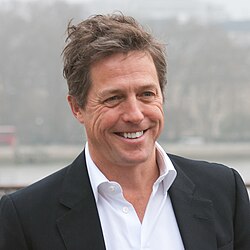Foundation
Latymer Upper School has its origins in the will of Edward Latymer, who left a bequest to educate "eight poore boyes" of Hammersmith. [2] This was intended "to keep them from idle and vagrant courses, and also to instruct them in some part of God's true religion". He owned Butterwick Manor and the land round about in Hammersmith. Most of Butterwick Manor House was demolished in 1836, except for one wing of the building, Bradmore House. This had been converted into a separate house in 1736; it survives in rebuilt form [a] on Queen Caroline Street, Hammersmith.
In 1627 Latymer split his Butterwick Manor estate three ways, allocating 6 acres [b] of land to provide charity for the poor of St Dunstan-in-the-West in the City of London; 8½ acres for what became The Latymer School in Edmonton; and 28½ acres for the Latymer Foundation at Hammersmith.
Edward Latymer's deed of conveyance 1627, transferring land of Butterwick Manor to the Latymer Foundation
View of Butterwick House and its south wing, Bradmore House. Watercolour by
Robert Blemmell Schnebbelie, 1839.
Bradmore House, Queen Caroline Street, Hammersmith: all that survives of Butterwick Manor. 1904 lithograph by
Philip Norman.
From Fulham to Hammersmith
In 1628, a school, partially funded by the estate of Dr. Thomas Edwards, who had died in around 1618, was built for the Latymer boys in the churchyard in Fulham. In 1648, the school moved to a new building, paid for by a Mr. Bull and a Mr. Palmer, in Hammersmith. This served until around 1657, when a charity school for the parish was founded in the churchyard of St Paul's, Hammersmith. At around the same time, and certainly before 1689, a girls' school was created, perhaps in the same building. [2]
The charity school was replaced in 1755 with a new building. It accommodated 25 girls and 20 boys. The school was expanded in 1819 to 50 girls and 80 boys. The girls' school was later closed, and the boys' school increased to 100 pupils. [2] [9] In 1863, the boys' school moved to a new building between King Street East (now Hammersmith Road) and Great Church Lane, a little to the east of Hammersmith Broadway. [2]
Painting of Latymer Charity School (right) in churchyard of
St Paul's, Hammersmith, between 1756 and 1862
The Latymer Charity School was in the centre of Hammersmith, beside St Paul's church. The later Latymer Foundation School was to the east; the current school is to the west.
[2]
Latymer Upper School, King Street
In 1878 it was agreed to build a new school in Hammersmith, with three of the governors to be appointed by the local borough council, and two by the London School Board. [11] The bishop of London, Frederick Temple, opened Latymer Upper School on its new site on King Street in 1895. The old buildings were used for Latymer Lower School, an "elementary" or primary school [2] The school taught boys aged up to 16; the fees were £5, [c] and boys from local schools could apply for scholarships. [11] The range of subjects taught included practical mechanics and experimental chemistry. [11] The school quickly grew to 300 pupils by 1880. The school was extended in 1901, allowing the total number of pupils to rise to 450. [2]
Latymer was further enlarged in 1930 by extending the main building to the south. The buildings at the Weltje Road and King Street corner were purchased and adapted, with the addition of a biology laboratory and the arrangement of a top floor room as a chapel; this was consecrated in 1938. [2] The school grew substantially in 1951 to over 1000 boys with the acquisition of Rivercourt House, beside the River Thames, extending the Latymer site southwards. [2] In 1957, the Industrial Fund for the Advancement of Science in Schools provided a grant which enabled the school to add new physics laboratories, completed in 1961; the school had grown to 1,150 by 1964. [2]
In 1945, Latymer became a direct grant grammar school, meaning that it took both state-funded and fee-paying pupils. Its head joined the Headmasters' Conference. [2] [13] The Direct Grant system was abolished in 1976, removing government funding, [15] Latymer became a public school, meaning that students normally paid fees. [1] [16] and the school switched to the Assisted Places Scheme, retaining a mix of partly or wholly funded places and fee-paying pupils.
Latymer Prep School is a junior school for pupils from age 7 upwards on the same site, in Rivercourt House, by the River Thames. It was founded in 1951 to prepare pupils for Latymer Upper School. [18] [19]
In 1996, the Sixth Form became co-educational. In 2004, the main school started on the same path, with the introduction of girls into Year 7; as those pupils moved up the school, it became fully co-educational by 2008. In 2018, the school won three Times Educational Supplement awards, for "Independent School of the Year", "Independent-State School Partnerships", and "Senior School of the Year". [22]
Each year, the school gathers in the nearby church of St Paul's, Hammersmith to celebrate "Founder's Day" in honour of Edward Latymer. [1] [23]
The 1895 building
The north doorway, with
Edward Latymer's crest and ornamental stonework

















